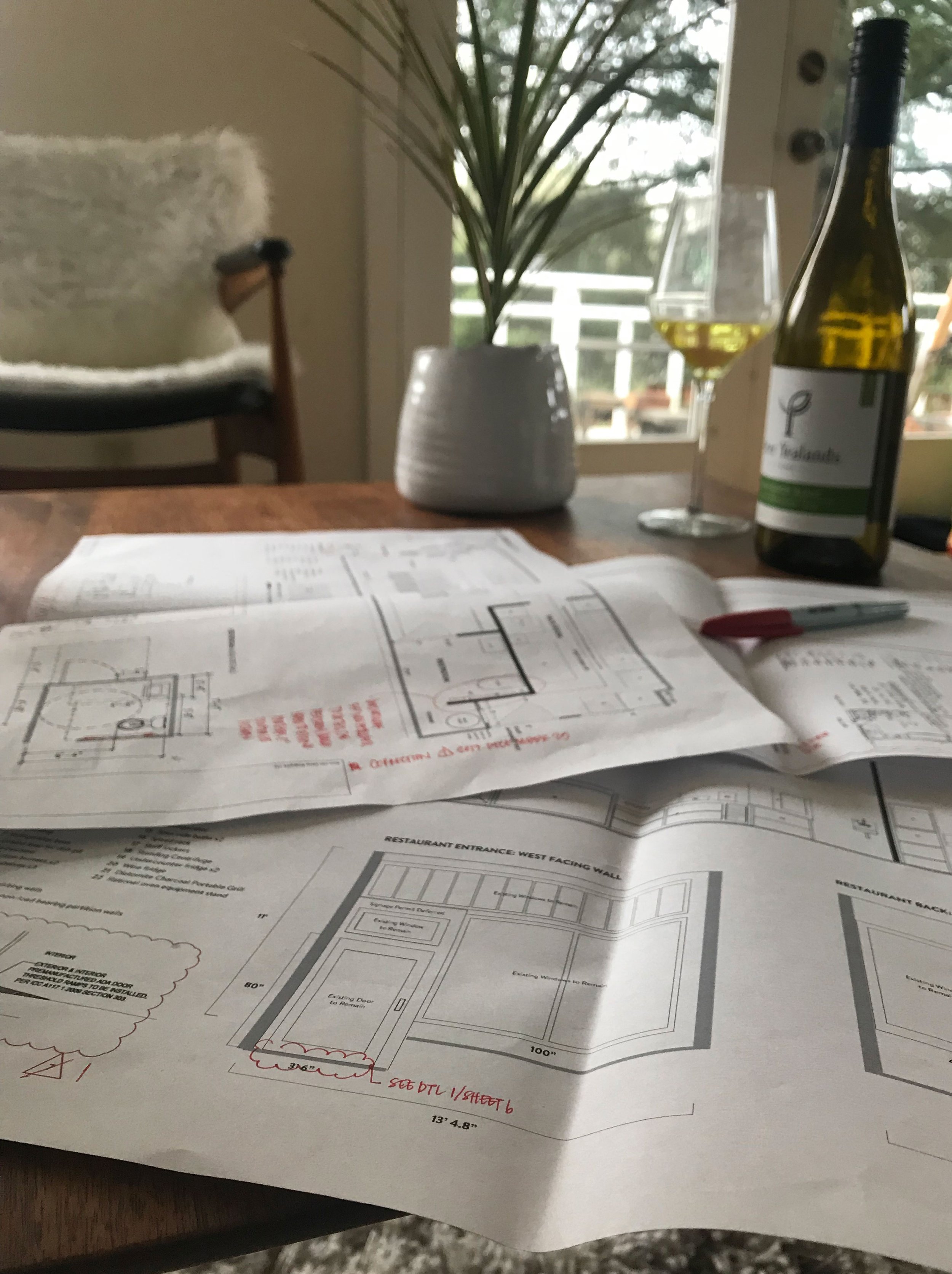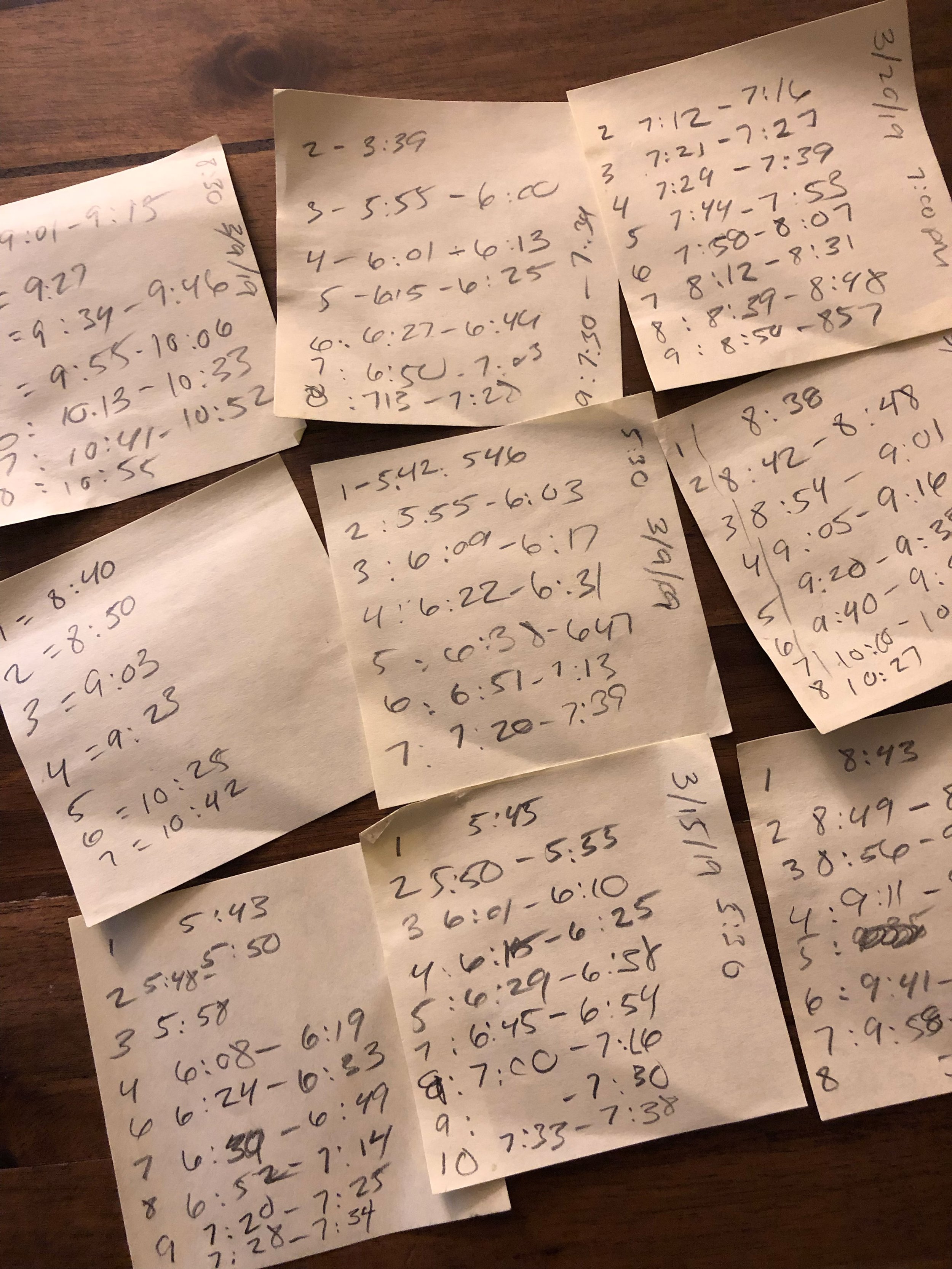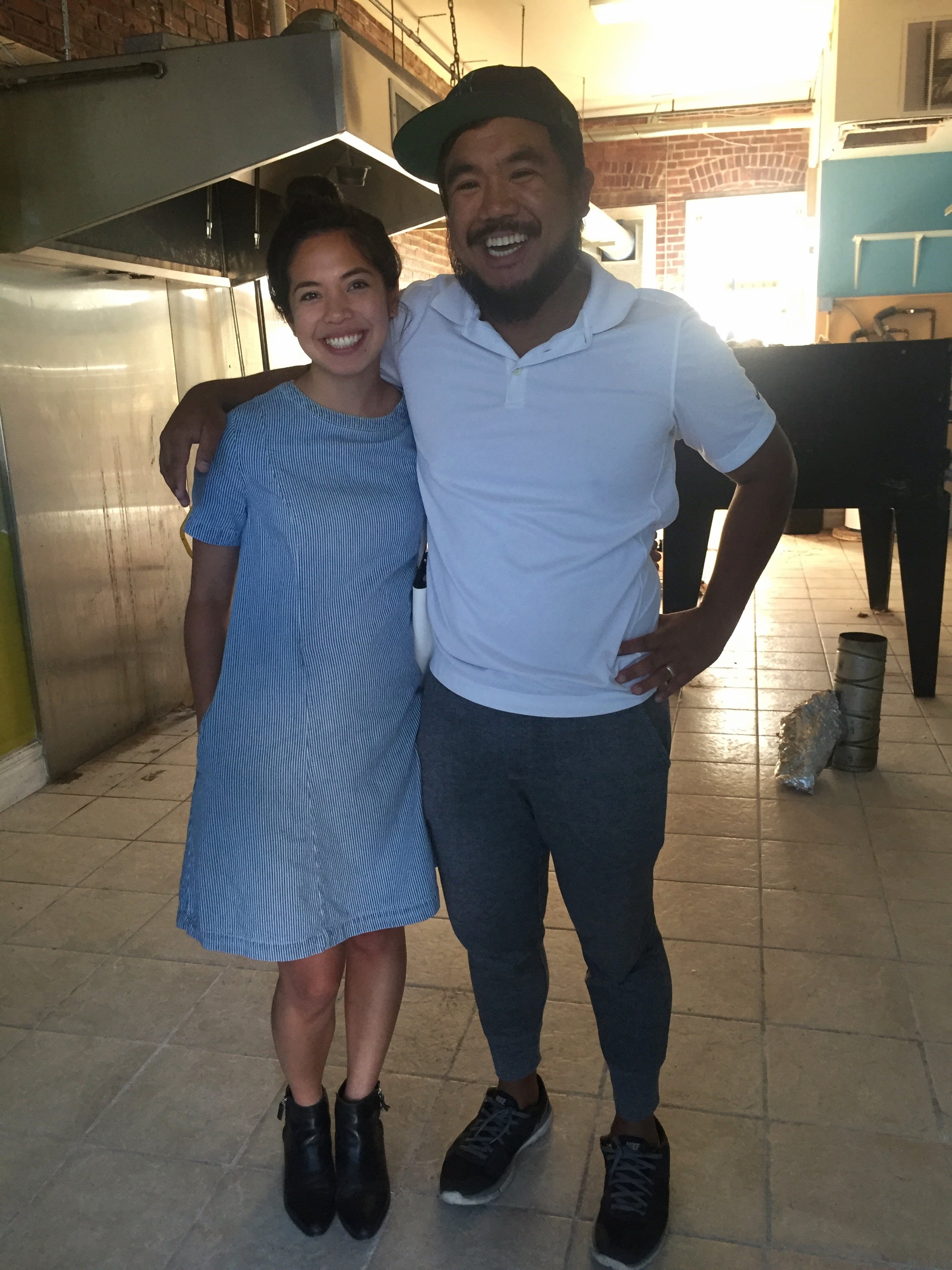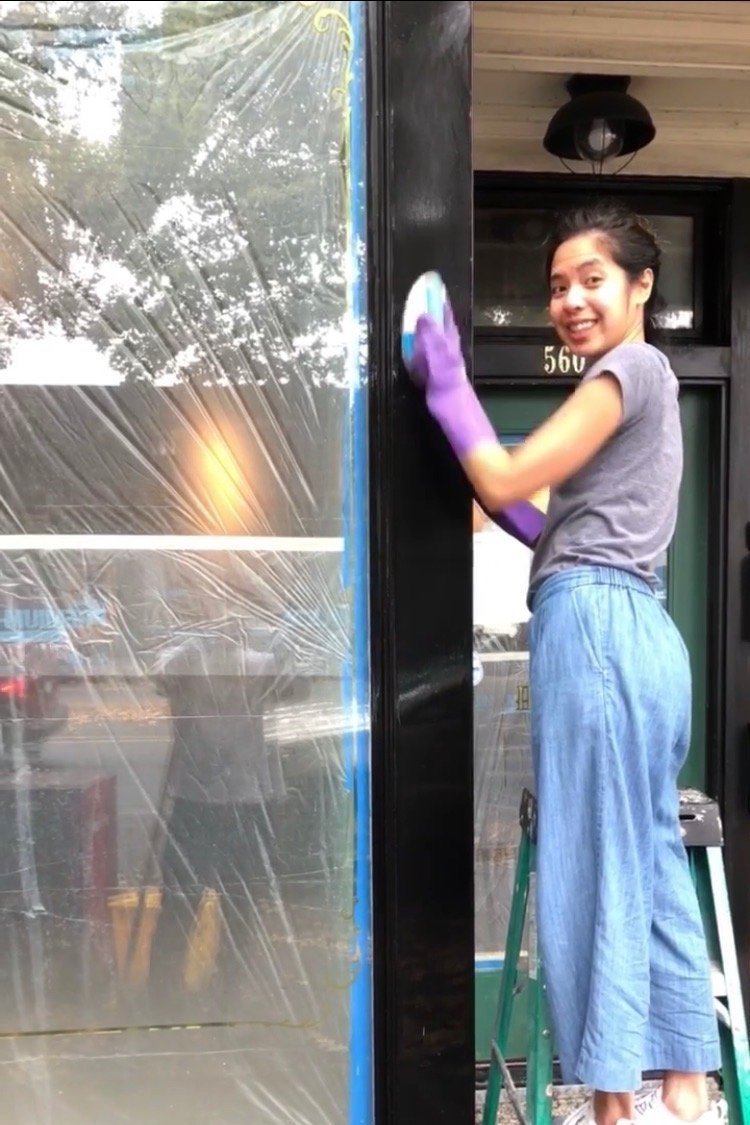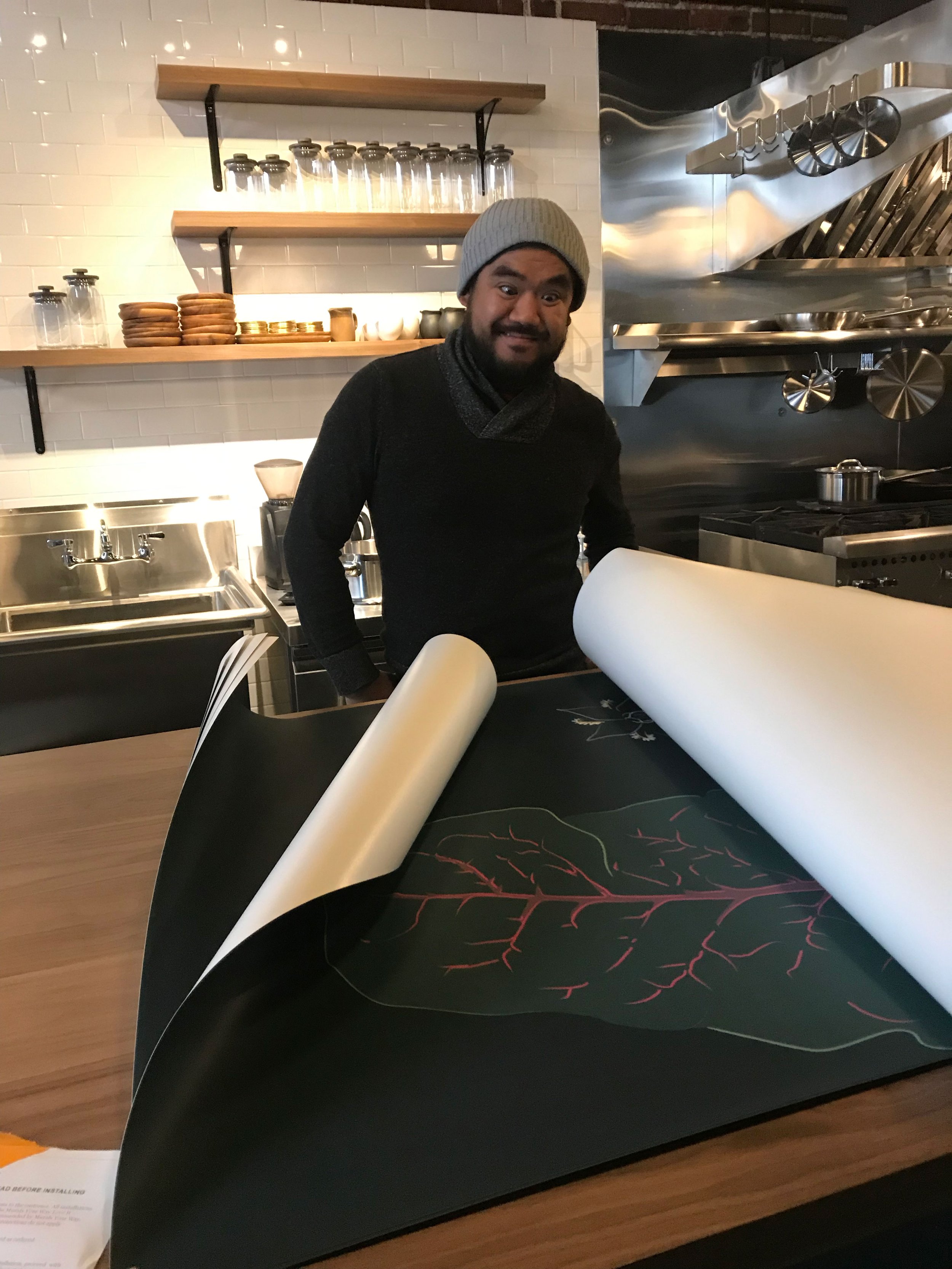Designing an Experience
Who are you?
Hello, I’m Amber, and no one knows what I do here…. but I’ll let you in on a secret, I do… a lot😄… reservations, payroll, social, maintenance, operations, customer service, taxes, permits, and more… Just some of the joys of owning your own business, but my main focus/career is in designing the experience 🤗.
Though Aaron and I had entered this crazy endeavor confidently (you honestly can’t take the leap that we did without believing in yourselves) we also anticipated a very long uphill battle of filling our seats. I actually was working a full-time job when we opened, thinking there would be all these days where we’d be closed because we wouldn’t have any guests… and we were very wrong. I remember the very first reservation release, watching my Tock dashboard hoping someone might book something… and suddenly we were fully booked for the entire month (this wasn’t completely out of nowhere, we had spent years prior building our relationship with our community, but that’s another story). The journey has been an incredible blessing, but it would be a lie if I didn’t say the transition has been a difficult one for me—coming into an industry that I was an outsider to, doing something that, in the restaurant world seems to not exist. With over a decade of work behind me, I had felt like a strong, independent, prolific authority, commanding the craft of my creative industry… but entering the restaurant world was a bit crushing and lonely, making me and my work feel small. Confusion around what I “brought to the table” has often made me look like nothing more than the devoted wife who “comes in to help.” There was even an article in the Seattle Met early on that kept referring to me as “his wife” and reduced me to “fierce eye-liner and hoop earrings” with not a word of the incredible amount of work I had put in. Growing up and coming through my career I had always been either the only woman or one of a few in the room, and it has never made me take pause, but coming into the restaurant industry made me feel like I had just gone back decades. I also entered this journey completely unaware of being so publicly visible. In my past creative work, I’ve always felt a lot more behind the scenes, and though I have been recognized and received accolades, the attention has always been from my peers, not from everyone in my city. Though we have been interviewed by some really incredible writers, with beautiful articles written about the restaurant, there have also been many times where we’ve been completely misrepresented. There was a funny one that I’m also low-key embarrassed about where the interviewer was asking about my background. I shared that I had grown up in the tiny town of Silverdale, where we boast being home to both the largest nuclear base IN THE COUNTRY as well as having the largest mall west of Seattle… shh it’s the only mall west of Seattle. In regards to the nuclear base, I joked that we were either really safe or in a lot of trouble. That translated to “she was terrified of growing up in Silverdale living down the street from the largest nuclear base in the country.” I was just like, I really really hope no one from Silverdale, a truly pleasentville suburban like town, would ever see that. You can see how easily your story can become someone else’s. So I want to take this moment to tell my own story, in my own words, and share what it is that I do.
So, what do I do, who am I? I am an efficient workhorse, a perfectionist, a creative problem-solver who thrives in a start-up like environment—tiny teams, lots of hats, and long hours, all being fueled by gallons of coffee, determination, and hope. I also love love love research, I’m deeply obsessed with history and uncovering connections. So opening this restaurant with Aaron as a team of two inspired by our regions history was perfect for me 😆. I had actually never wanted to be an entrepreneur. The idea of running something just seemed like the unfun work that would get in the way of me creating. But what I do love, is making crazy ideas real. I do not consider myself a dreamer, I am a doer and if I say I’m going to do something I HAVE to do it, no wishy washy words, but a roadmap for action and execution that begins immediately, no matter what it is. The more unobtainable, the better. So though owning my own business was never a desire, the sheer craziness of it made me 100% on board. Plus it was something that I had been pushing Aaron to do for years. It was financially crazy but also completely rooted in my belief that Aaron’s talent was meant for this and that we were both creative enough to create something beautiful.
I was definitely excited by the prospects of doing what we wanted the way wanted. I’ve always found that too much established structure really kills my creativity, when institutional process has strayed so far from the original intent that no one really knows why they’re doing it, they’re just doing it… that being said, I actually LOVE rules and structure. I say this because context is everything and when done with incredible intention and meaning, it can be really impactful. Process is often recycled when it’s worked in the past for something similar, but that something was just “similar”, it was not exactly the same, because life and time are organic, ever changing no matter what you’re working with. When used again and again for something that changes over time, that motion or process becomes less and less appropriate for the context of the current thing it’s supposed to be supporting. It’s rules and structure telephone, and it ends in a big mundane mess.
The beauty of rules and structure are that they dictate the world we create for ourselves, the experiences that move us through time. I had spent the earlier part of my career focused on animation and storytelling, and I loved this because you had complete freedom to create these little worlds where anything could happen… if it made sense in that world.
So wait… what is it that you do???
So back to the answer the original question, this is what I do, I create a mini world that exists in your day for 2 hours—a carefully orchestrated moment in time that begins when you enter the door of Archipelago.
I had said earlier that I came into the industry doing something that seems to not exist. It is in fact something that exists, as my own inspiration and drive comes from restaurants that have moved me, that have left me with open ended experiences I carry with me to today, but it’s not common. I’m not sure how the role manifests itself in these other establishments, but at Archipelago I am the Director of Experience. Much like directing a performance while also executing the logistical utility to create ease and comfort, there is structure to move guests along a journey while opening flexibility to enable them to also dictate how they’d like to get there.
Huh? What does that even mean?
I know that probably sounds vague and broad, so I will provide the example of the experience of the entrance. Our store front is not the best, we are not allowed to refresh the chipped paint and the gutters above are always full, causing muddy water to constantly splash, making it impossible to keep the front clean (you can see me trying in vain to keep it clean in the photos above.) This limitation that originally made me want to scream forced me to relook at it, embrace it. It gives our little restaurant an unassuming look, a look that blends into the background like it’s nothing. Filipinos have often been referred to as the invisible minority, again, something in my college days that made me want to scream, I now embrace. Our peoples incredible resiliency and ability to adapt and blend has created the progress that we celebrate at Archipelago each night. And though it can be frustrating to feel invisible, we cannot disregard the sacrifice and struggle of those before us—we would not have the opportunities we have today without them. So, much like our restaurants exterior, we are hiding the beauty of our culture’s individuality inside, and now it is our turn to pick up where our ancestors left off and to become visible. This has dictated the entrance.
We have big velvety curtains that hide the inside from the street but also street from the inside. Those waiting outside have no idea what they’re coming into. When we open the door, the contrast between the inside and out is meant to be jarring, but in a good way. A little surprise of warmth and welcome from the cold outside. When the door is open, our entire team greets you, not unlike when you visit a Filipino home. Once inside, you’ll find yourself in a cozy room filled with furniture and decorations from the home I grew up in. The curtains that were creating anticipation outside, now help guests forget that they’re on a main business strip. I like to also welcome guests with a joyful song to enhance the contrast, often something more traditional to set the tone of our journey from the motherland to the states, then followed by mellower sounds that reflect the season as guests get settled in (from there the music is meant to align with the dinner, a playlist filled with FilAm BIPOC artists whose subject matter contains social commentary appropriate per dish as well as for the times we are in). These are all the moves that are meant to create emotions and feelings to set the tone.
In order to really allow the guests to focus on the experience of entering, we also orchestrate and plan to create efficiency. This is the structure that guests shouldn’t notice, but only feel in ease of their experience. Some of these things being as simple as assigned seating. And though yes, most restaurants are not “seat yourself” establishments, there’s something about the communal counter that makes guests assume they seat themselves. I can’t tell you how many times I’ve shown a guest to their seats and they say “oh, it’s assigned seating.” I suspect maybe it’s the sitting at the bar mentality, where it’s often a seat yourself if there’s room situation. The most straightforward benefit is avoiding the strange shuffle of figuring out how everyone fits. Unlike tables, a fully booked communal counter can’t have stray seats. If the first party to arrive does not sit in place that has the correct number of seats needed on either side of them, it will force them to later get up and rearrange in the tight space to correct it. Moments like that can really hit the pause button, pulling guests out of the experience we worked so hard to pull them into.
Another benefit is being able to curate the guest experience before they arrive. Even though it’s a small room with just a counter and a table, guests can have a very different experience depending on where they sit. Knowing little things like if a guest is pregnant tells me not to seat them behind the stove, which happens to be the warmest seat in the house—we tend to run warm 🤰🏻. Or if they’re a solo diner I’ll put them closest to the action so that they can enjoy the show. Larger parties I’ll typically seat on the other side of the counter or at the table as they have come to spend time together. Or, in this pandemic, if I get any sense that someone in the party is at all nervous about dining out, I’ll make sure to put them at the table or on the ends of the counter so that they have some room from the other guests. These are small considerations that help curate each guest’s time with us, allowing them to sit back and take in the experience comfortably.
To add to the comfort and welcome, at each guest’s seat is a little shelf for their phones, or clutches (I’ve always hated having to put my clutch uncomfortably in my seat with me). Filipinos like to take pictures… A LOT of pictures, so we love to embrace that part of our culture. It’s a great way to keep your phone on hand… but also off the table 😄. A pandemic addition has been each guests getting their own hydrating rosemary mint hand sanitizer. Guests love being able to clean their hands right away and it helps avoid a long line to the bathroom. Again, small things to help guests avoid any barriers to immersing themselves in the experience.
All of this takes place within the first 5 min of the experience, all before we even begin the dinner. Though it can all seem trivial, it is something that has evolved over time as we have learned from past experiences, tweaking things ever so slightly from dinner to dinner until it achieves both the emotions and efficiencies we aim for.
Of course like all things, we make adjustments and improvements because something didn’t quite work or we saw a need for something that didn’t exist—like the shelves under the counter. We are always learning, and I’d love to share some of things I encountered early on, especially as someone new to the industry, but that might need to be part 2— I realize this is getting really long.
I don’t know if anyone made it down this far, but if you did, thanks for letting me share a little about what I do. Thanks again, see you at the restaurant!
❤️ Amber, Archipelago Owner / Experience Director / CXO
Amber and her and Aaron’s son Po po (short for Apollo)


